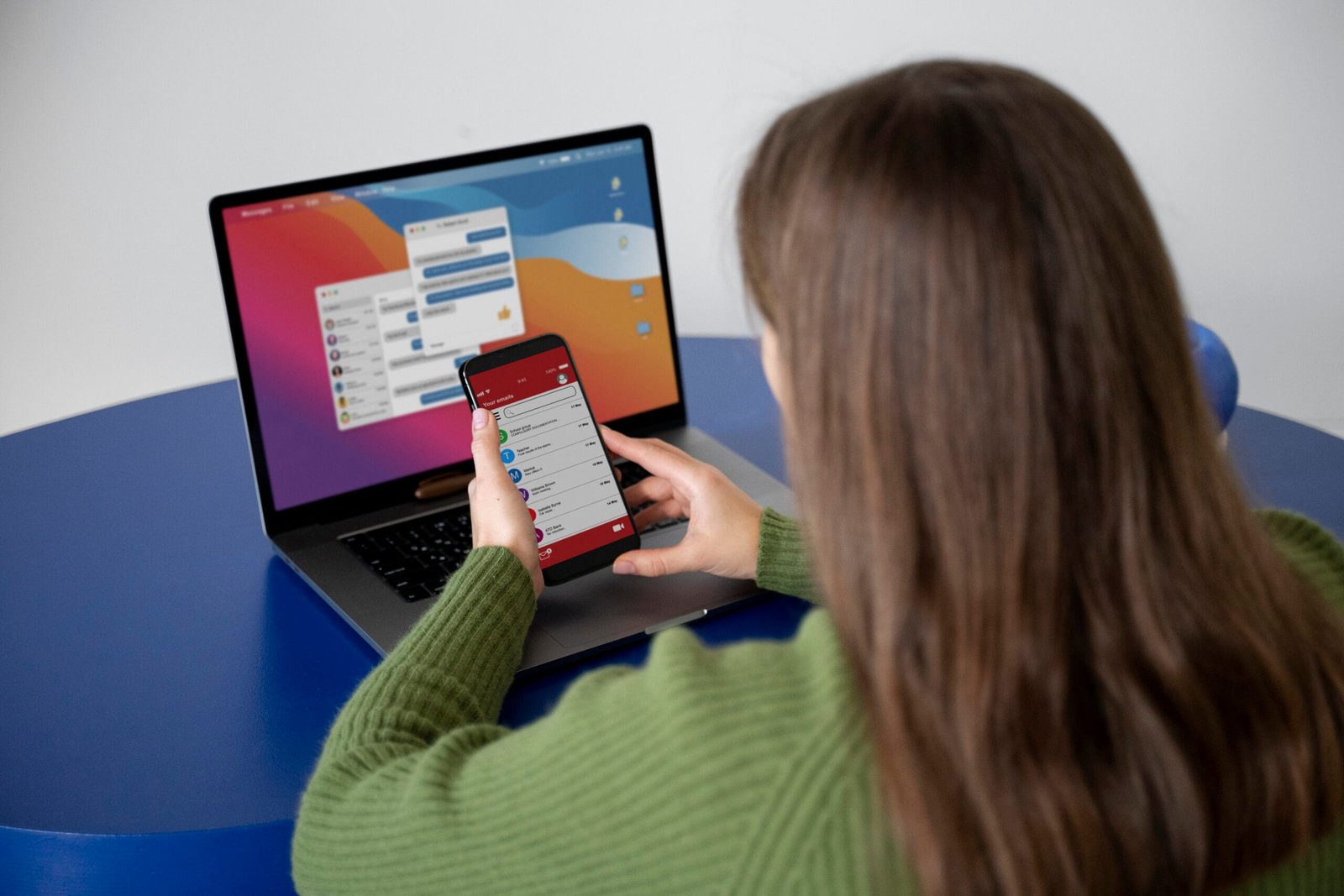The concept of “less is more” has become increasingly popular. This is particularly evident in logo design, where brands are shifting toward minimalism. Minimalist logos focus on simplicity and clarity, allowing the design to stand out without the clutter of unnecessary elements. While flashy, complex logos might seem more eye-catching, minimalism has emerged as a more powerful approach to branding. The preference for simple, clean designs is growing, but what exactly makes minimalism such a significant trend in the world of logo design? Let’s explore why simplicity is now considered the gold standard for modern logos.
What is Minimalism in Logo Design?
Minimalism in logo design focuses on utilizing only the most fundamental elements to effectively convey a brand’s message. This means stripping away complex details, intricate textures, and an overload of colors, leaving behind only what is necessary. The objective is to create logos that are clean, simple, and instantly recognizable. By focusing on clarity and functionality, minimalist logos are designed to make a lasting impression while avoiding visual noise. Elements like basic geometric shapes, limited color palettes, and clean typography are typically used to create a design that is both professional and memorable. This approach leads to a logo that is both simple to comprehend and aesthetically pleasing.
Why is Minimalism Popular in Modern Logo Design?
In a world overflowing with information, the ability to capture attention quickly is vital for any brand. A minimalistic logo allows for instant recognition because it doesn’t overwhelm the viewer with excessive details. By reducing complexity, these logos make it easier for the brain to process the design at a glance. This speed of recognition is crucial in a highly competitive, distraction-filled environment. Minimalist logos also tend to be more versatile and memorable, which further enhances their popularity. Brands are realizing that a simple design often communicates more effectively than one packed with too many elements, especially in an age where consumers have shorter attention spans.
Instant Recognition
Minimalist logos thrive on being instantly recognizable. In an era where people are constantly bombarded with visuals, logos that are simple yet distinctive can be processed by the brain much faster. This is a key advantage in grabbing and retaining attention. A minimalistic logo uses fewer elements, ensuring that it doesn’t overload the viewer with too much information, which can cause confusion or distraction. Instead, the simplicity allows the design to stand out and be easily understood at first glance. Think about brands like Nike with its iconic swoosh or Apple with its bitten apple logo. These logos are simple, yet they are instantly recognized worldwide.
Memorability
Another major benefit of minimalist logo design is its ability to be easily remembered. When logos are free from excess complexity, they are much easier for the viewer to recall. A clean, simple design is more likely to stick in people’s minds, making it easier for them to associate the logo with the brand. This is why brands that opt for minimalist logos often experience higher brand recall. For example, the McDonald’s golden arches are so simple that even young children can easily recognize and remember them. A minimalist logo’s ability to be memorable plays a critical role in brand building, helping to keep the company top-of-mind for consumers.
Versatility
One of the key benefits of minimalist logos is their adaptability. Because these designs use basic shapes, limited colors, and simple typography, they can be easily adapted to various platforms and sizes without losing their impact. Whether it’s a website, a business card, or a billboard, minimalist logos retain their effectiveness across all mediums. The same logo can be scaled up or down without compromising its clarity or recognition. For example, the Google logo is a prime example of minimalism in action. It’s easily adaptable to large banners or tiny browser tab icons (favicons), yet it remains consistent and impactful on any platform.
Timelessness
Minimalist logos have a unique ability to stand the test of time. Although design trends may change, simplicity remains a timeless element. A well-crafted minimalist logo doesn’t need frequent updates or redesigns because its core elements are timeless. This longevity can save companies a lot of time and money in the long run, as they won’t need to rebrand every few years to stay relevant. The Coca-Cola logo, for instance, has largely remained the same for over a century. Its clean, simple design has allowed it to transcend trends, proving that minimalism can help a brand maintain a consistent and timeless identity.
Key Elements of a Minimalist Logo Design
Minimalist logos may appear simple, but they require a thoughtful design approach. The key to a successful minimalist logo is its simplicity—using as few elements as possible to communicate the brand’s message effectively. Clean lines, basic geometric shapes, and a clear focal point are essential for achieving the minimalist aesthetic. Another important aspect is the use of a limited color palette. Often, minimalist logos rely on one or two colors to maintain a sleek and uncluttered appearance. Strategic use of negative space is also a hallmark of minimalism, allowing the design to breathe without feeling overcrowded. Clear typography and basic geometric shapes enhance the minimalist style, giving the logo a polished and easily recognizable appearance.
Benefits of Minimalist Logo Design
The shift towards minimalist logo design isn’t just a trend; it comes with a host of benefits that can positively impact a brand. One of the biggest advantages is enhanced brand clarity. A minimalist logo forces the designer to focus on the core message, eliminating any unnecessary elements. This results in a clear, concise design that communicates the brand’s values more effectively. Another benefit is professionalism. A neat, structured minimalist logo helps a brand project an image of trustworthiness and dependability. This perception of professionalism can give customers confidence in the company. Additionally, minimalist logos keep the focus on the product or service rather than distracting the audience with overly flashy visuals.
1) Enhanced Brand Clarity
A minimalist logo compels brands to hone in on what truly matters. By eliminating unnecessary details, the logo sends a clear and concise message, allowing the core values of the brand to shine through. This clarity in design helps potential customers instantly understand what the brand stands for. For example, the Target logo, with its simple red bullseye, perfectly conveys the idea of hitting the mark. This minimalistic design aligns with the brand’s goal of providing efficient, straightforward shopping, making it both functional and memorable. By focusing only on essential elements, brands can create logos that communicate their identity in the clearest way possible.
2)Professionalism
Minimalist logos inherently project an image of professionalism. The clean and organized design gives off a sense of reliability and trustworthiness, which is critical for building a strong brand reputation. A minimalist logo looks sleek and modern, signaling that the company is well-established and focused on quality. Take the Microsoft logo, for example. The use of four simple squares represents the different segments of its business, creating a professional, understated look. This design communicates a no-nonsense approach, making it easier for customers to trust the brand. Professionalism is key in branding, and a minimalist logo can help convey that message effortlessly.
3) Focus on the Product or Service
When a logo is simple, it allows the audience to focus on the product or service, rather than being distracted by an overcomplicated design. A minimalist logo removes the clutter, enabling consumers to appreciate the brand’s offerings without interference. This is particularly important in industries where the product speaks for itself. For instance, Unilever uses a minimalist “U” shape composed of icons representing its products. While the design is simple, it effectively conveys the brand’s diversity without overshadowing the quality of the products themselves. This focus on simplicity helps businesses highlight what they do best, without unnecessary distractions.
3) Cost-Effective
Designing a minimalist logo can be more budget-friendly than intricate designs, particularly over time. Simple logos are easier and less expensive to reproduce across different mediums, whether for printing, marketing, or digital use. The straightforward design also means fewer resources are needed to maintain and update the logo over time. A brand like Canon, which uses a simple wordmark, doesn’t require intricate detail, making it cost-effective for printing on various products and materials. This is a major benefit for brands looking to create a strong identity while keeping costs manageable.
4) Easier for Rebranding
Minimalist logos are often easier to update or modernize when the time comes for rebranding. Because they rely on simple, essential elements, slight tweaks can be made without losing the brand’s core identity. This flexibility allows businesses to stay current without undergoing a complete redesign. For example, Pepsi has made several updates to its logo over the years, but its fundamental circle shape has remained the same. This consistency has allowed Pepsi to stay recognizable, even as it evolves with the times. Minimalist logos make it easier for brands to adapt while maintaining a strong connection to their original identity.
Conclusion
Minimalism in logo design is more than just a passing trend; it’s a powerful tool that offers numerous advantages. From enhanced brand clarity and professionalism to cost-effectiveness and easier rebranding, minimalist logos provide lasting value to businesses. By focusing on simplicity, brands can create logos that are not only visually appealing but also highly functional. If you’re in the process of designing or redesigning your logo, adopting a minimalist approach could be the key to creating a timeless design that resonates with your audience. In the crowded market of today, a well-crafted logo can differentiate your brand and make a memorable impact.



